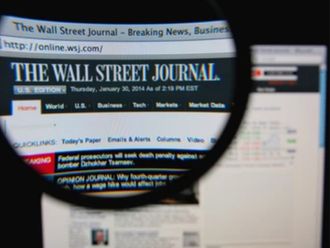One huge question was hanging over the Federal Reserve before Wednesday’s Fed-a-palooza. And in the course of a statement after the central bank’s policy meeting; new forecasts for the economy and interest rates; and a Q&A from Janet Yellen, the Fed chairwoman, it got at least a semblance of an answer.
The question is this: Is the central bank ready to move briskly with unwinding its era of extraordinary stimulus in the economy, confident that the recovery will continue strengthening without monetary support struts? Or does the Fed expect to continue flooding the economy with cheap money well beyond the point where growth is truly robust?
Yellen, less than half a year into her job leading the central bank, is already adept at saying a lot of words while conveying minimal new information. But if you read between the lines of her comments, she is clearly tilting toward the latter. She displayed no hint that her rate-increasing trigger finger was getting itchy.
Here are the nuggets we detected in the various communications that shed light on where the Fed is going.
Weaker Forecasts
The pattern over the past four years has been this: The Federal Reserve forecasts stronger growth right around the corner; it doesn’t materialize; the Fed downgrades its forecasts.
It happened again Wednesday. Leaders of the central bank now expect GDP to rise only 2.1 to 2.3 per cent in 2014, compared with a 2.8 to 3 per cent forecast in March. The Fed left its forecasts for 2015 and 2016 growth unchanged, but the fact that stronger growth remains on the more distant horizon - not a reality this year — argues for resisting any inclination to hike rates sooner rather than later.
Playing Down Higher Inflation
In the news conference, CNBC’s Steve Liesman asked Yellen whether she was concerned that inflation, which has been much lower than the central bank’s 2 percent target in recent years, now seemed to be reaching near or past that level this spring.
She emphasized that those month-to-month inflations were “noisy” and said that inflation seemed to be evolving broadly along the lines the Fed had been expecting. Had she said nothing, that would have implied she was laying the groundwork for the recent uptick in inflation as a rationale for, say, tapering off the Fed’s bond buying program faster or raising interest rates sooner.
The Fed’s projections supported the same notion. Leaders of the central bank expected 1.5 to 1.7 per cent inflation in 2014, nearly identical to their forecast in March and a level below their target. That implies that recent higher inflation readings have not caused them to reset their expectations broadly.
Responding to a later question, she said: “For the moment, I don’t see any trade-off whatsoever in achieving our two objectives. They both call for the same policy, namely, a highly accommodative monetary policy.”
Little alarm over financial risk
Yellen was asked about some signs of greater risk-taking in financial markets and potential overheated markets for stocks and other assets. She didn’t take the bait the way one might expect if she were trying to tip her hand about future tightening.
She argued that stock market prices appeared broadly in line with historical norms relative to earnings. She said that the Fed monitors risks to financial stability, such as underwriting standards for loans and lending rates on risky debt, but used language similar to what she has used in the past, not the tone that would suggest growing alarm about financial bubbles.
“I don’t see kinds of broad trends that would suggest to me that the level of financial stability risks has risen above a moderate level,” she said.
Playing Down Rate Forecasts
There was one subtly hawkish sign contained in the Fed’s projections, namely a slight increase in the average expectation of policy-makers for where interests rates ought to be at the end of 2015 and 2016. But that was paired with a slight decline in what the policy makers think will be the long-term level of short-term interest rates.
But Yellen explicitly recommended against reading much of anything into the chart filled with blue dots that the Fed uses to convey that information.
“I would caution that we’ve had turnover,” she said, referring to two officials leaving the policy committee and three new ones joining since March. That, she said, “can create changes in projections that are difficult to interpret.”
Add it all up, and while the Fed events Wednesday shouldn’t radically transform anybody’s notion of where the central bank is headed, it should put a damper on some of the talk that Yellen is eager to head for the easy money exits.












